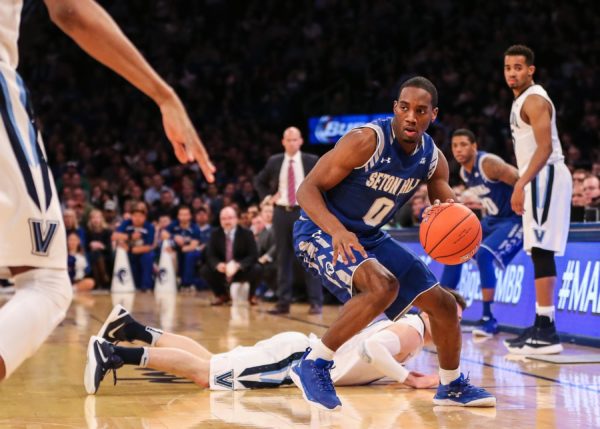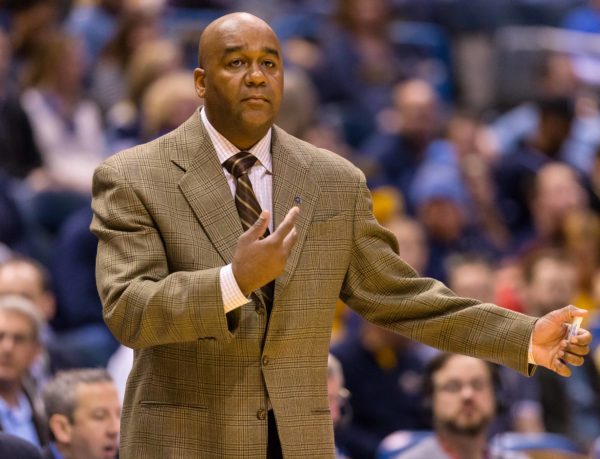Previewing Four Key Big East Storylines
Posted by Justin Kundrat on October 13th, 2016Every team experiences roster turnover and this offseason was no different. What’s interesting this time around, though, is that those personnel moves were particularly harsh to the better half of the conference. Villanova, Xavier, Butler, Seton Hall and Providence – the conference’s five representatives in the NCAA Tournament last season — each lost leading scorers or otherwise critical starters. Some of the bottom half of the league, however – e.g., Creighton and St. John’s — emerged relatively unscathed. There will be some natural upheaval in the standings as teams at the top re-position themselves with different rosters, but the 2016-17 Big East is likely to hinge on a number of key questions and themes below.
What to Make of Seton Hall Without Isaiah Whitehead?
The highly touted 6’4” guard lived up to the hype in his sophomore season and used it to sign a four-year contract with the Brooklyn Nets over the summer. By putting the ball in his star’s hands and letting him create, Kevin Willard led the Pirates to their first NCAA Tournament appearance since 2006. Whitehead was one of the highest usage players in the country last season, and rightfully so — his ability to get into the lane to score or dish puts immense pressure on opposing help defenders. With Whitehead no longer around, Willard will turn to junior Khadeen Carrington to handle the point guard duties. Carrington is more than capable of running the show, but teams always take a different form after losing a ball-dominant player. Whitehead and departed senior Derrick Gordon accounted for over half of the team’s assists last season, so the biggest question at Seton Hall is whether anyone on the team other than Carrington is capable of propelling the offense. Swingman Desi Rodriguez didn’t show that he could create much off the dribble last season and forward Angel Rodriguez primarily garnered his points off putbacks or dump-offs. Maybe freshman Myles Powell can create something for himself, but that remains a big question mark.
Marquette May Have the Big East’s Most Efficient Offense
Before you say “no way,” just hear out the argument. Last year Marquette had the third highest effective field goal percentage among Big East teams in conference play. The team’s inefficiencies, however, stemmed from limited second chance opportunities and an inability to take care of the ball. The former problem won’t change much this season, but the latter most certainly will. Last season Steve Wojciechowski assigned point guard duties to freshman Traci Carter, who, like most first-year players, struggled with turnovers while adapting to the pace of the college game. But it’s hard to ignore his positives: He ranked 45th in the country in assist rate, third among all freshmen. Next, departed freshman Henry Ellenson, despite having the highest usage percentage on the team, was one of the team’s least efficient scorers with a 48.0 percent eFG. Those shots will now go to the likes of Luke Fischer (60.8% eFG) and USC transfer Katin Reinhardt (53.4% eFG), while also paving the way for the development of Haanif Cheatham. Moreover, every good offense needs good shooters, something Marquette sorely lacked a season ago. To solve for this, Wojciechowski added Reinhardt, a 37.3 percent shooter from deep, transfer Andrew Rowsey, a 37.1 percent shooter, and a handful of sharp-shooting freshmen. Keep an eye on the Golden Eagles’ offense this year.
Villanova’s Small-ball Offense Will Get Even Smaller
Last season’s Wildcats did their damage by spreading the floor with four competent shooters and a legitimate low post threat in Daniel Ochefu. The big man underneath has now graduated and incoming freshman Omari Spellman was declared ineligible by the NCAA – so now what? Villanova returns just one experienced interior player in 6’8 Darryl Reynolds, an effective rebounder in his own right but not nearly as good as Ochefu. Jay Wright’s team is rightfully picking up numerous preseason accolades based on the strength of its returning cast, but it would be misleading to overlook the probable growing pains his team will face as newcomers Tim Delaney (freshman) and Dylan Painter (freshman) get acclimated to big-time college basketball. As they do, it’s not crazy to imagine Villanova employing an ultra small-ball lineup with 6’6” Kris Jenkins or 6’7” Fordham transfer Eric Paschall manning the center position and punishing defenders by stepping outside the paint on the offensive end.
Will Georgetown’s Incoherent Unit Finally Turn the Corner?
The Georgetown program has suffered a sad state of affairs in recent years as talented players have gotten buried in a system to which they don’t fit. But things changed somewhat last season when the Hoyas endeavored to push the tempo. Guard LJ Peak often used his physical frame to attack the rim and Isaac Copeland looked more comfortable in the open floor. With D’Vauntes Smith-Rivera now gone, John Thompson III has recruited several reinforcements, most notably transfers Jonathan Mulmore (“the fastest kid he has ever coached“) and Rodney Pryor, who averaged 18.0 PPG last season at Robert Morris. Both players should help to reinvigorate the Hoyas’ offense. Many pundits are questioning Georgetown’s ranking of fourth place in the Big East preseason poll, but it’s hard to question the talent on the roster. Instead, the onus is once again on Thompson to coach his players into a position to succeed.












































